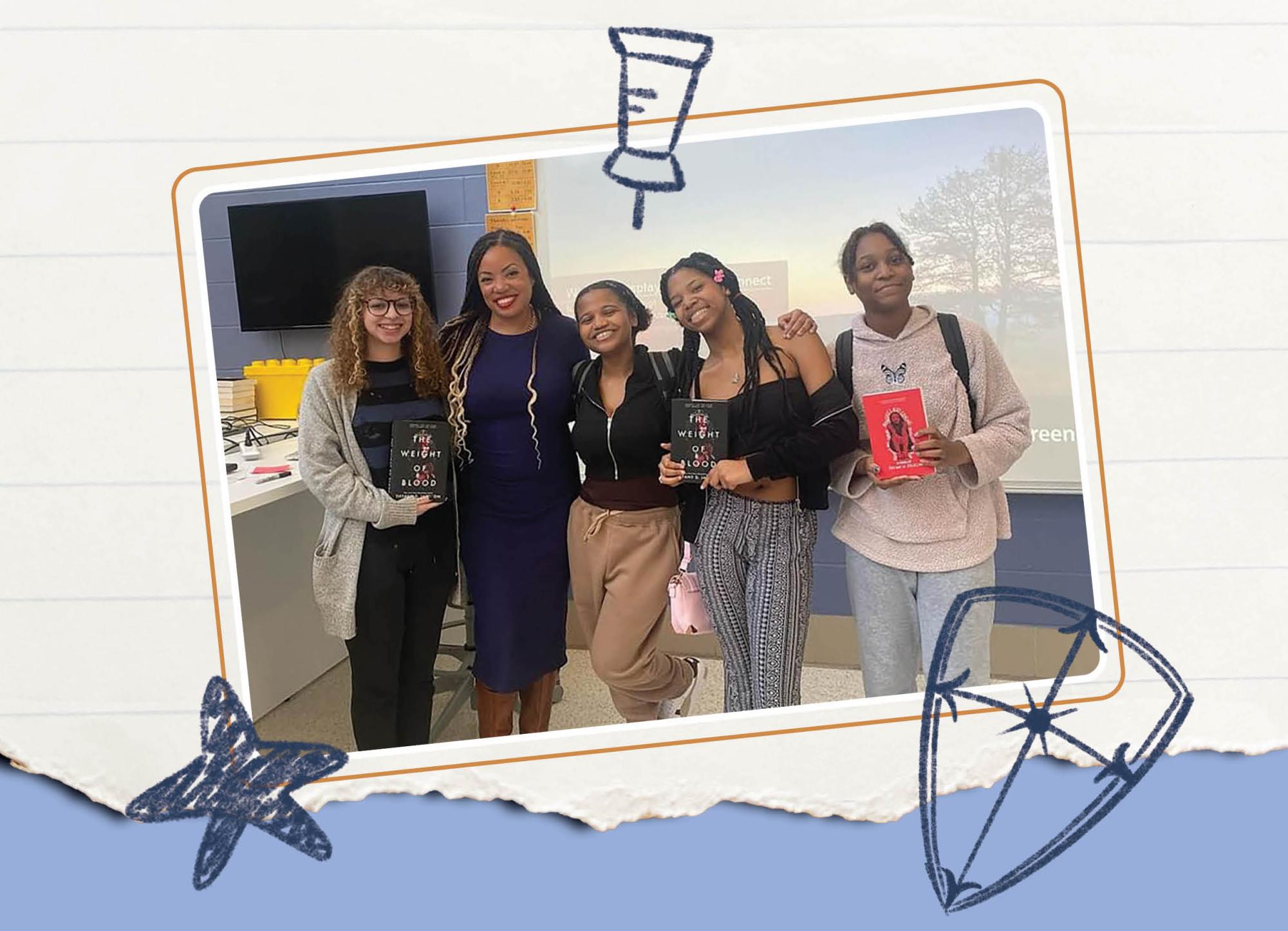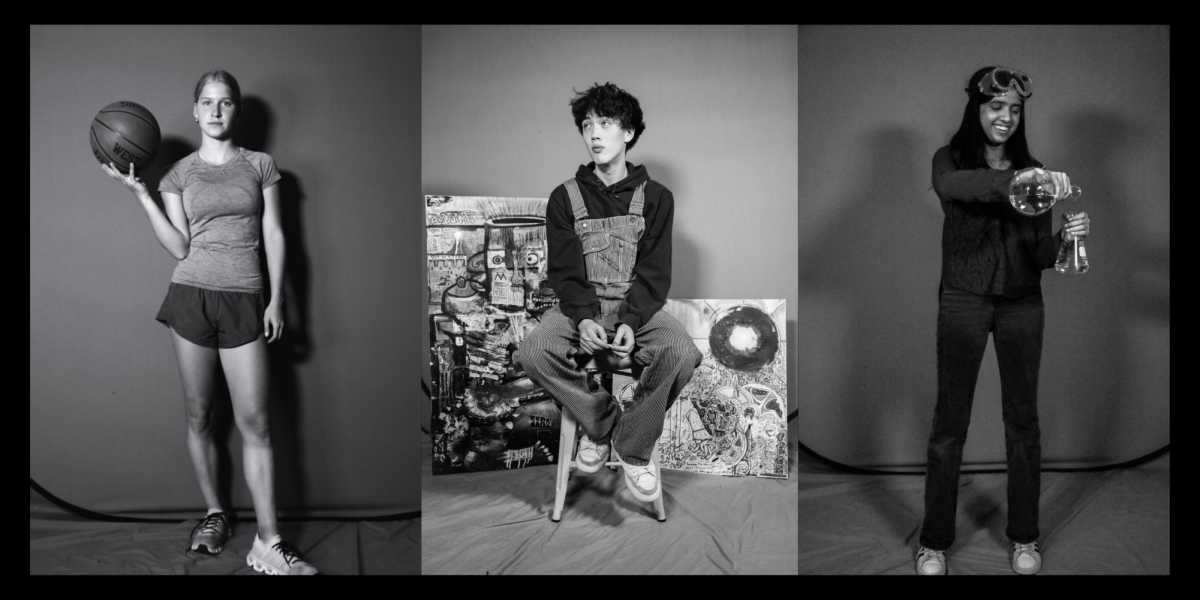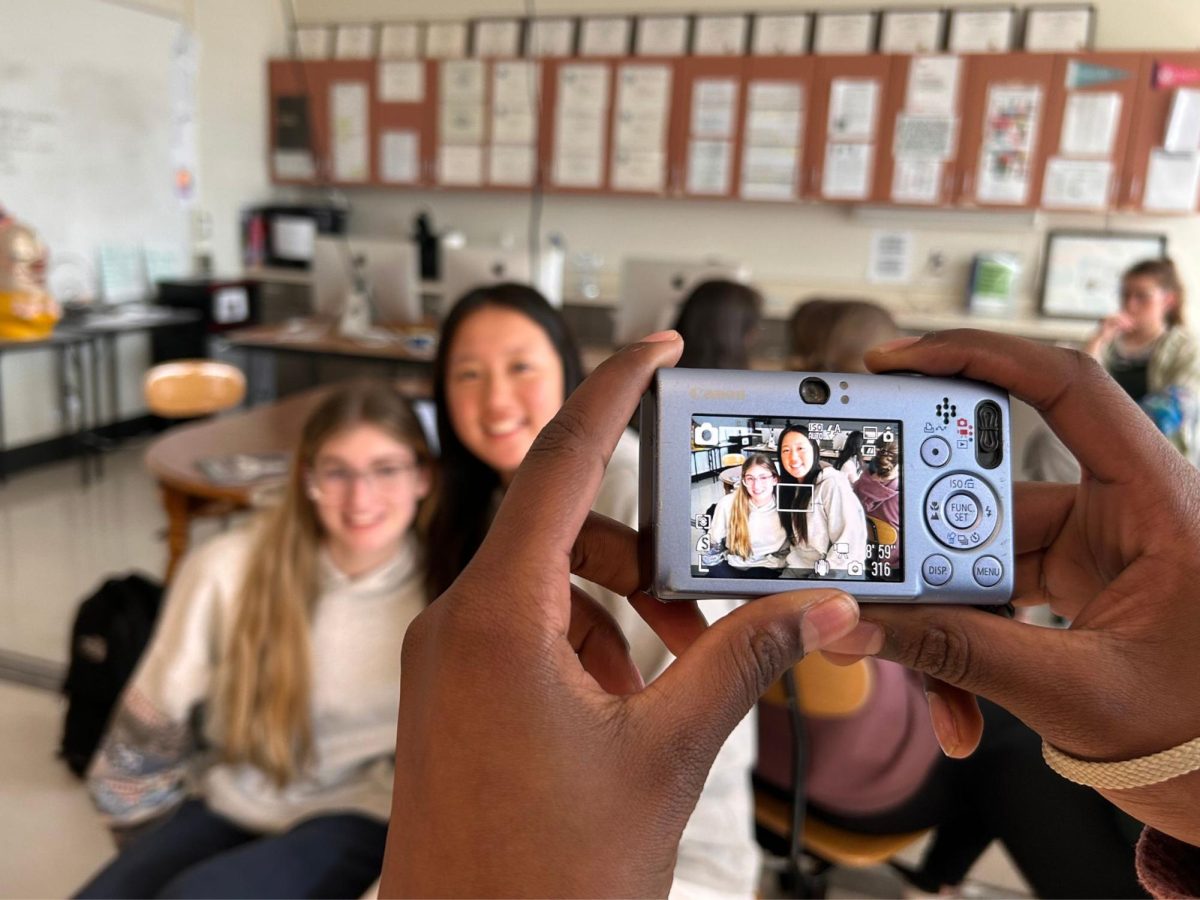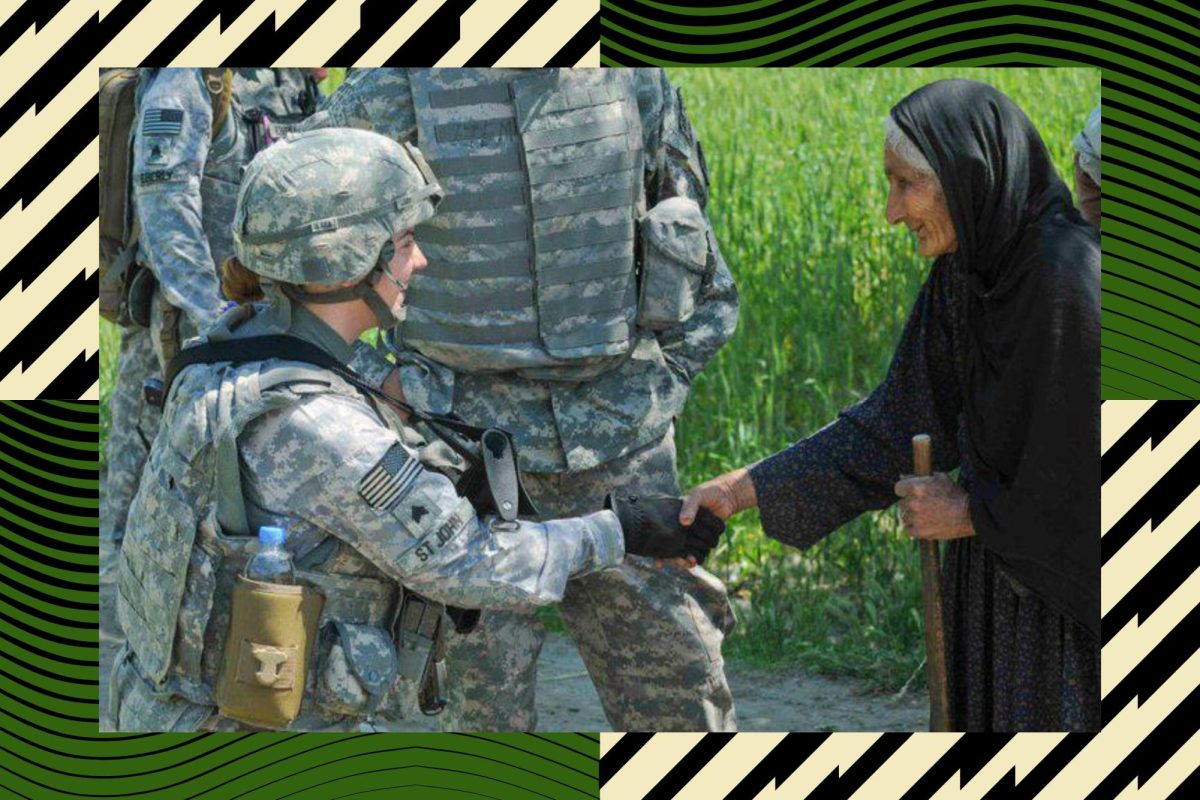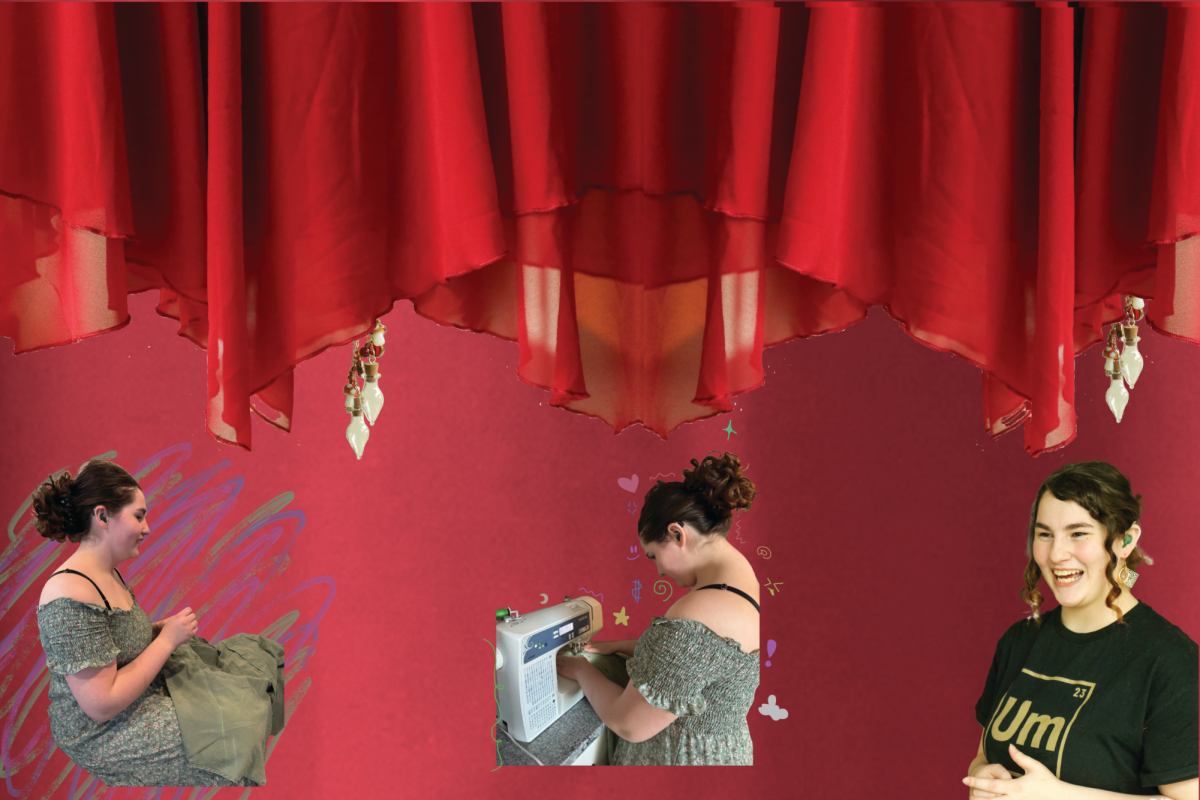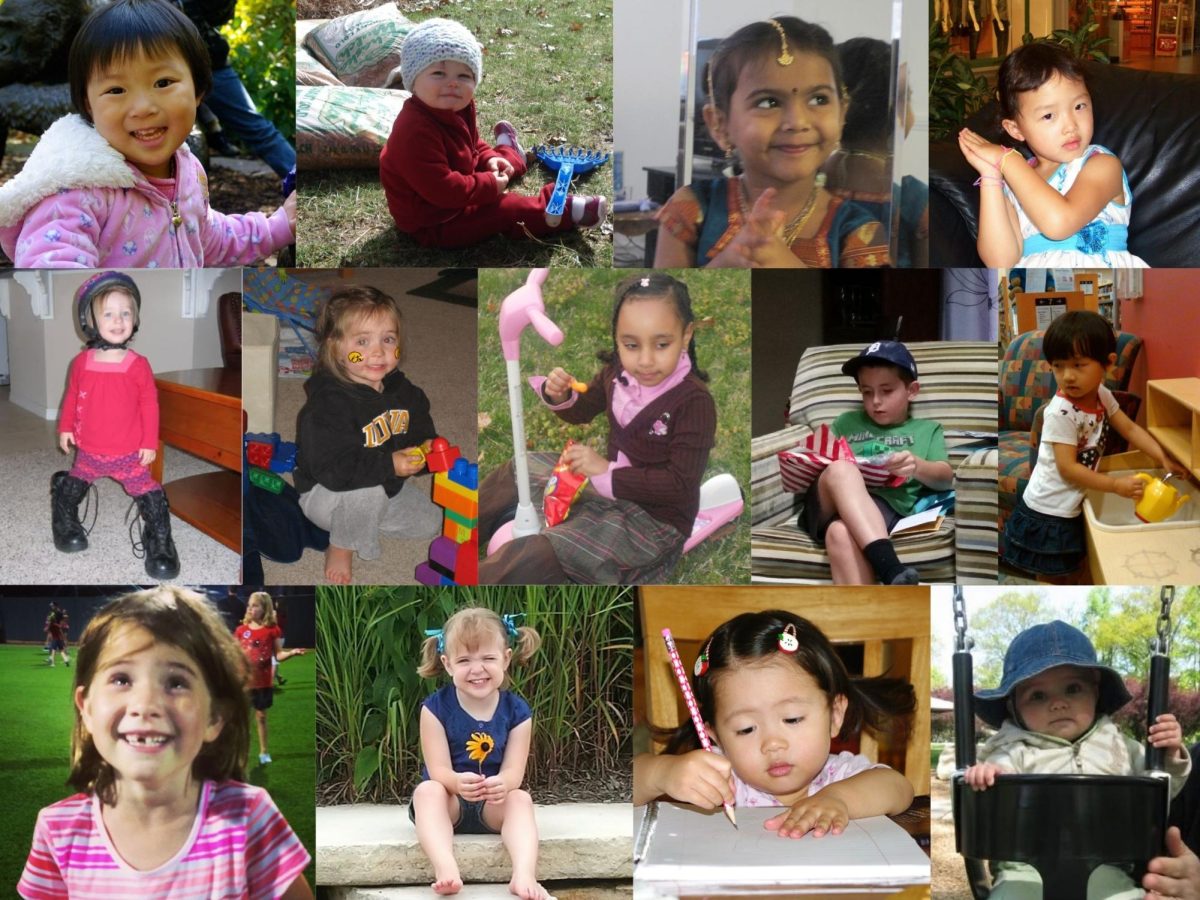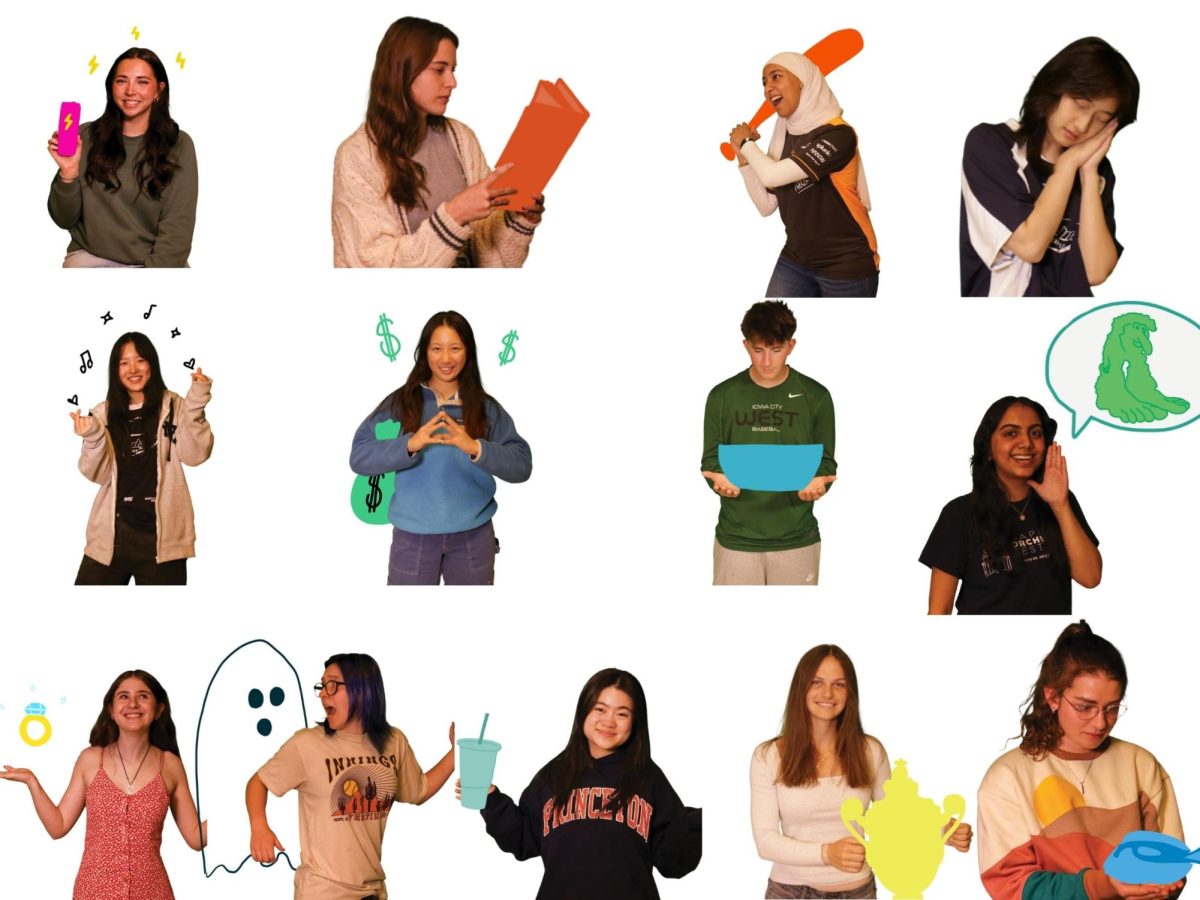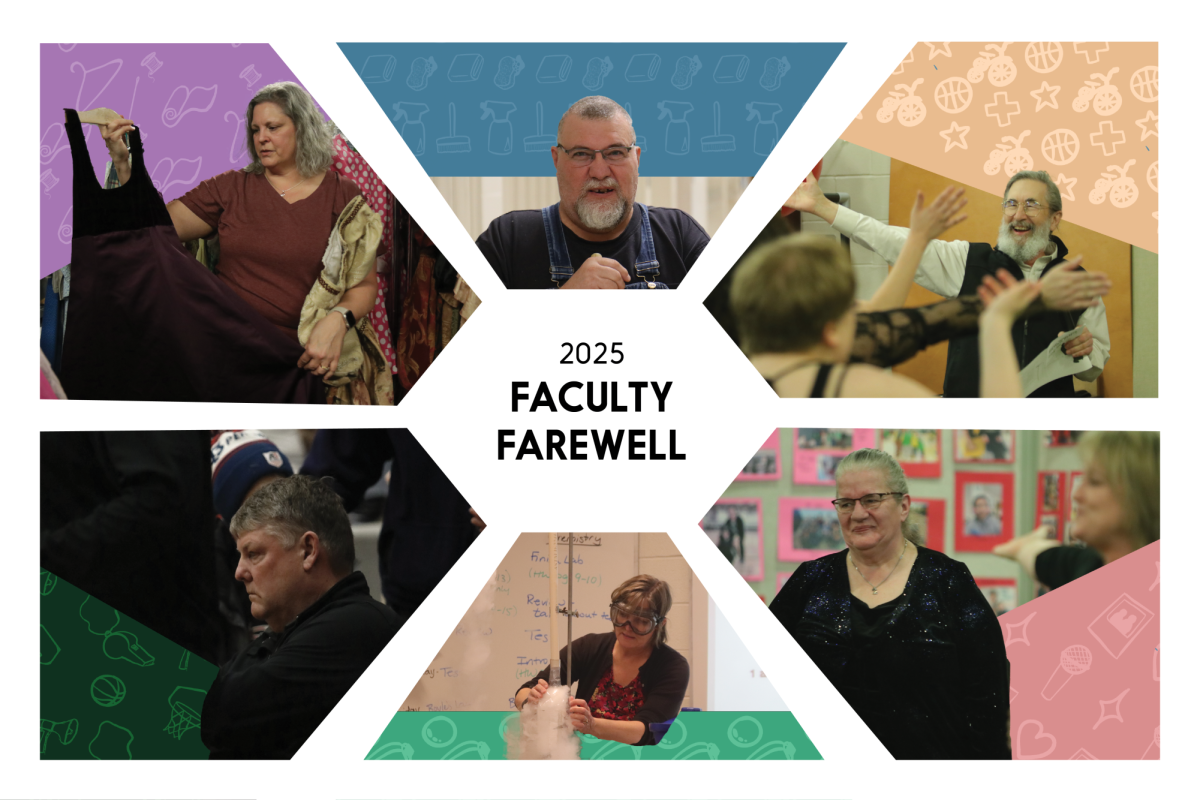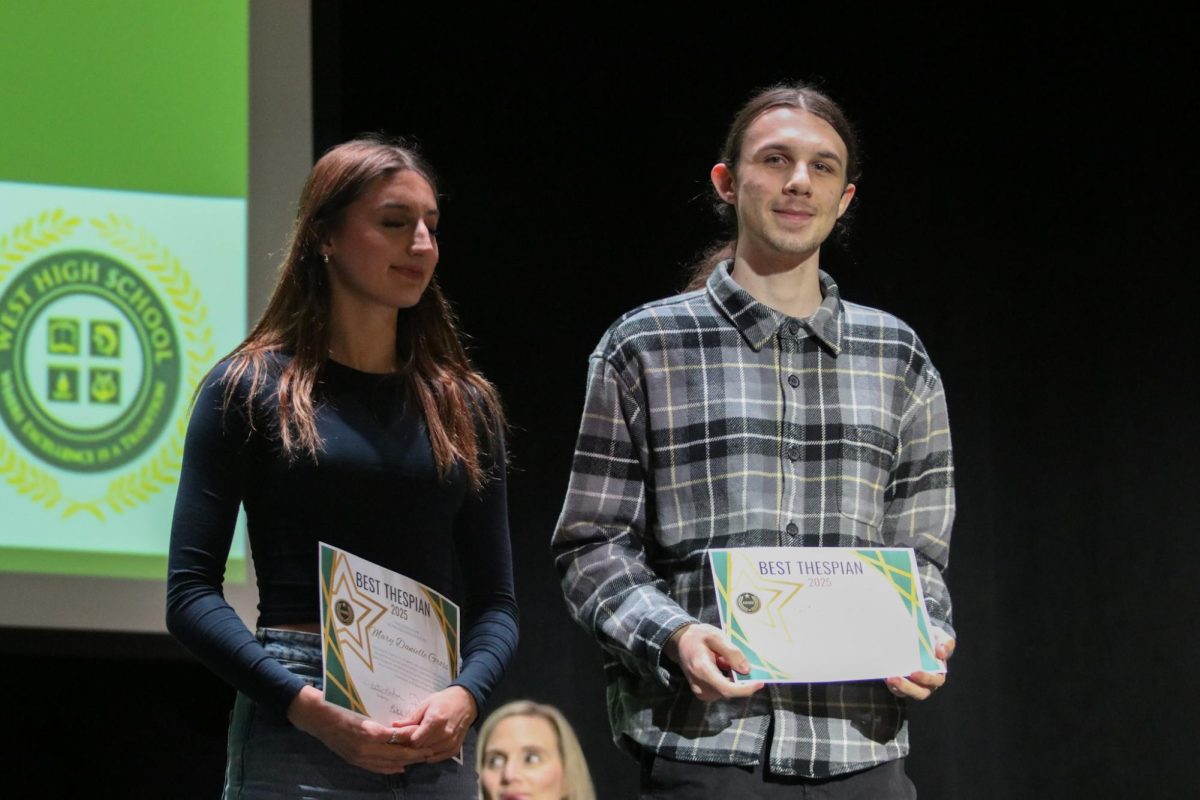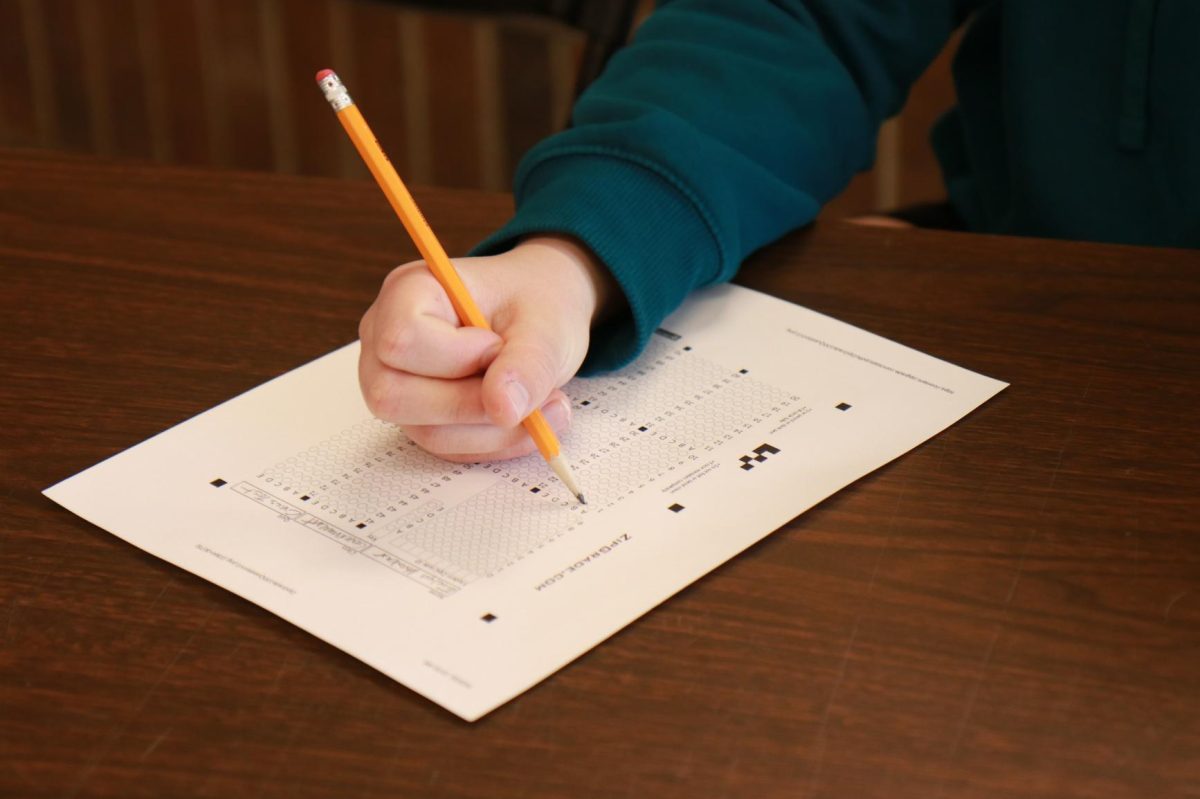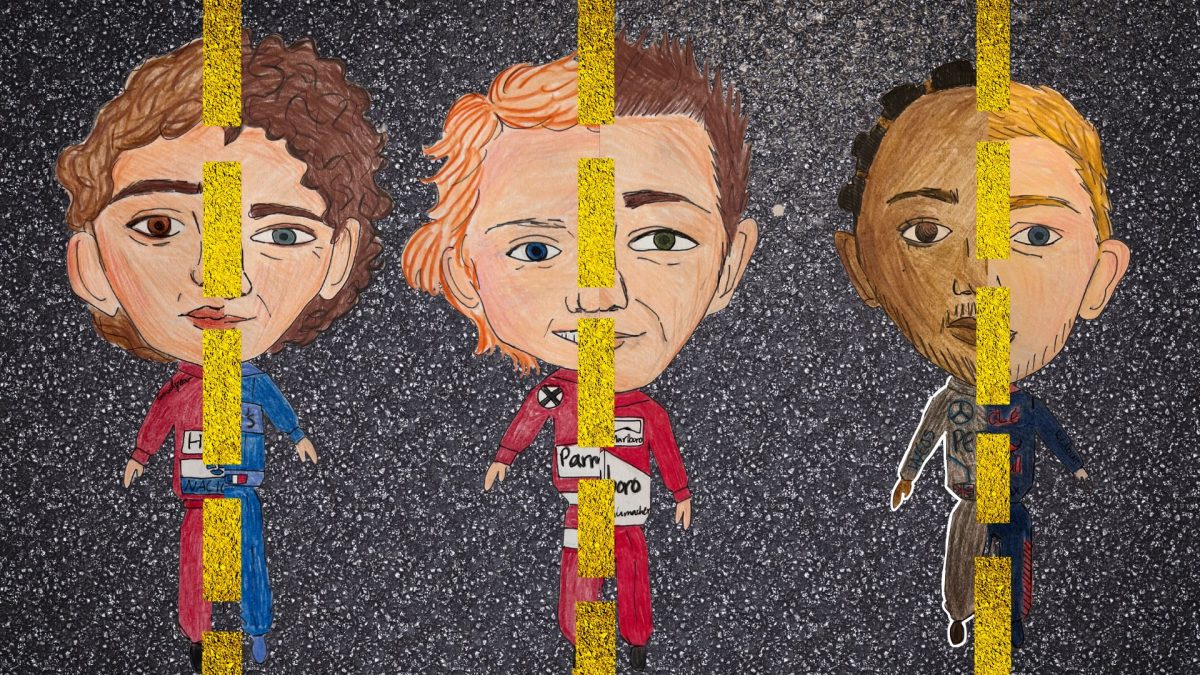The Iowa Department of Education defines alternative education as “a perspective, not a procedure.” While students at the ICCSD’s traditional high schools may overlook Tate, it remains a vital part of the school district. Tate focuses on providing its students with a personalized education plan and resources essential for their success.
Named after Elizabeth Crawford-Tate, the owner of Iowa City’s first rooming house for Black tenants, Tate honors her legacy by creating a safe and inclusive environment for all students.
Tate’s schedule closely resembles West’s Thursday schedule, with classes between 9 a.m. and 3 p.m. Like West, Tate’s days are filled with various classes, field trips and clubs. Besides core classes, students participate in Kirkwood Academies, where they enroll in free college classes at Kirkwood Community College and can earn an associate’s degree. Additionally, students can join in extracurricular activities and travel to other schools for sports with larger programs.
“Tate has clubs to help kids thrive and feel comfortable in their environment, such as Glitter Club (LGBT), Girls Group, Boys Group, a club for teen parents, as well as a bunch of student-made clubs. I started a dance club the year I went,” Gabby Williams, a 2023 Tate Graduate, said in an interview conducted over email.
Misconceptions about Tate
Ann Browning is Tate’s principal and has been an educator for 37 years. She was previously a City High assistant principal and taught at West High and Northwest Junior High before becoming Tate’s principal in 2012. Since walking through Tate’s doors, Browning’s goal has always been to help students achieve their educational and personal goals.
“When I first got here, Tate was a little crazy. I was like, ‘Oh no, what have I gotten myself into?’” Browning said. “Kids would leave, go down to McDonald’s and come back. Or maybe smoke across the street.”
Despite Browning’s initial concerns, she hopes to make Tate a pillar of support for its students. Alternative high schools strive to help students facing challenges in a traditional high school setting. However, misconceptions persist about Tate and alternative high schools across the nation.
Browning describes how an incident at West led to some of these misconceptions.
“About 10 years ago, a group of girls went off-campus to fight and got suspended for 10 days. Everybody goes, ‘Hey, whatever happened to those girls that got in the fight? Oh, they went to Tate. Yeah, all the bad kids go to Tate,’” Browning said. “But that’s not why they went to Tate; they went because they were falling behind academically and [wouldn’t] graduate with their class.”
For many students at Tate, external circumstances affect their ability to maximize their education. According to the Iowa Department of Education, 73% of students at Tate qualify for free and reduced lunch, compared to 34% at West. According to Browning, Many students work outside of school to support themselves and their families, and many experience mental health issues, identity issues and houselessness. These factors, coupled with the typical stressors that accompany high school, can lead students to seek a different environment where they can thrive.
“When [students] get referred and come to Tate, they have a chip on their shoulder and feel like they got voted off the island. Like, ‘I have to come here now, and I heard nothing but bad kids come here,’” Browning said. “It’s just a misconception. We’re a really great school. We’re just smaller [than a typical high school].”
Education at Tate
Tate has a distinct method of educating students, starting with open communication.
“Kids get here and really like the school. We have a lot of things that help. We have our Student Advisory Center (SAC), where if anybody acts out more than three times, they go down there,” Browning said. “We work out the issue, and they can’t go back until they talk to their teacher. We pull the teacher out and have a quick conflict resolution [to]repair that relationship.”
Browning is committed to ensuring every student at Tate feels supported within the school environment. To achieve this goal, the administration transformed Tate into a Positive Behavior Intervention Support (PBIS) school. With the integration of the program, students earn “tickets” for attending classes and demonstrating positive behaviors. These tickets can be exchanged at the school store for a variety of food items or prizes. Notably, all ICCSD schools utilize this system in different capacities.
“What we want the kids to [think] is, ‘Wow. I’m doing really good things, and it’s being acknowledged.’ We have positive office referrals [sent in] emails. We [also] have positive note cards that go home, and we have a shout-out board where we write positive things,” Browning said.
ICCSD defines PBIS as “an application of a behaviorally-based system approach to enhance the capacity of schools and the communities around them.”
“We took administrators, teachers and kids to [PBIS] training and learned how to focus on the positive. Instead of saying, ‘You’re late, where’s your pass? You’ve missed three days of school. Where have you been? We say, ‘Hey, great choice coming here today,’” said Browning.
Tate makes every accomplishment, no matter how small, a win. Browning and the Tate administration understand every student faces their own battles, and sometimes, arriving to school on-time is an achievement. As part of being a PBIS school, selecting a mascot is integral. With input from students who participated in PBIS training, Browning carefully deliberated a mascot that embodies the spirit of the school.
“[PBIS] said, ‘You need a mascot,’ and threw out all these warriors. So, I’m like, ‘I don’t know, you guys, we want a really good perception in the community,’ and [the students] said, ‘But Ms Browning, we feel like warriors every day just battling our own unique battles just to get to school.'”
Due to their focus on academics for self-improvement, Tate restricts phones and homework in their curriculum. A study by World Education found that test scores increased by 6.4% when mobile phones weren’t used in the classroom and by almost double for low-achieving students. Browning also acknowledges the lack of phones helps with the social side of school by reducing interpersonal conflict.
“[Put] your phone down and unplug from the drama. If I see it or hear it during nine to three in the Academic Wing, the phone is mine for the day,” Browning said.
If students don’t hand over their phones, Browning tells them to leave Tate for the day and return the next to start over. This is with the assumption that students are able to be more successful when they’re focused on their academics rather than outside distractions.. Tate works hard to ensure students struggling outside of school don’t fall through the cracks.
“We might have work days if somebody has a mental illness or depression, and they stayed home for three to four days. I will say, ‘Let’s just go down to the SAC, I’m going to get all your work. We’re just going to sit here until you’re caught up,’” Browning said. “We keep on top of their grades and have interventions, so they’re not failing.”
Tate’s administration, along with other high schools in the district, utilizes an “F list.”
“Teachers’ grades are due at the end of every week. If a kid has an F, they tell me why the student has an F. Could it be attendance? Could it be that they’re having a hard time processing, when they miss one day it’s like missing three?” Browning said.
This is the most important step in the intervention process for the Warriors. Every day, there is “Warrior Work Time,” a specific academic focus time for students with Ds and Fs.
Students’ efforts and achievements are celebrated at the end of each trimester.
“We have an award ceremony for academics, attendance, attitude and we have student of the month.” Browning said.
Not only does Tate help students with academics, the school also helps connect students with therapists, food bags to take home, personal care items and housing help. Many students experience houselessness and live in housing provided by United Action for Youth (UAY).
For Browning, the best part of teaching and working at Tate is reaping the joy kids feel when they succeed.
“ I just I love to see [the kids] find their self-confidence and their worth when they work really hard to graduate,” Browning said. “Some of my favorite success stories are kids who really find out that their confidence grows in themselves, and they realize, ‘Wow, I can do this.’ They start showing up, and then they graduate. We’ve had kids take Kirkwood regional classes and graduate with college credits. Last year, we had a student who went through the Automotive Collision Academy, and all the places in town were just waiting for her to graduate because she was so good; she was at the top of her class there.”
Why Tate?
Although there are various reasons a student may choose to enroll at Tate, Williams believes some attend the school for a less stressful academic environment.
“Not everyone is comfortable in a big school, and some people’s anxiety is through the roof every single day out of fear of being judged by everyone,” Williams said. “Tate is significantly smaller and more of a tight-knit community.”
Williams struggled with West’s population of over 1,500 students. After talking with her mom, who works at Tate as an Engagement and Intervention Strategist (EIS), they decided moving to a school with 150 students would be better for Williams.
Unlike many high schools, Tate is a tenth of the size of a typical public high school and has a 12:1 student-to-teacher ratio. This ratio helps teachers hone in on individuals’ needs, ensuring students reach their goals and graduate. Tate’s administration individualizes the process so students are able to have the best educational experience possible.
When students are directed to Tate, they are met with an opportunity to find paths that work for them. Along with meeting students’ academic needs, the staff at Tate encourages adequate attendance, behavior and mental health practices. Using this information, they determine the best plan of action for students to graduate.
“At Tate, we are really responsive to individual needs,” Browning said. “So when students come over here, we sit down and figure out what they need to graduate and what support [they need].”
Although Tate’s education spurs students’ academic and personal growth, getting students to accept support can be challenging, as they often don’t know what to expect initially.
“In orientation, [the administration] says, ‘What do you guys want to do? Do you want to graduate possibly early,stay here and graduate or earn your credits and go back to your high school?’” Browning said.
When given the opportunity, Williams knew she wanted to graduate early from Tate.
“As soon as I enrolled at Tate, I talked with my counselor and asked to get put on the early graduation schedule because I was on track with my credits and would have what I needed by the end of the year,” Williams said.
Because of the switch, Williams graduated a year earlier than her class and had a more individualized educational experience consisting of smaller class sizes and personal guidance.
Williams feels that her time at Tate allowed her to gain control of her life and pushed her to where she is now.
“Tate was a better choice for me because it’s smaller, so I could come out of my shell a lot more and the teachers made classes easier for me to understand. Teachers at Tate give a lot of extra help and support to their students,” Williams said. “They want everyone to succeed and really pay attention to you. If something seems off, they know you well enough to figure out what they could do differently to help.”



